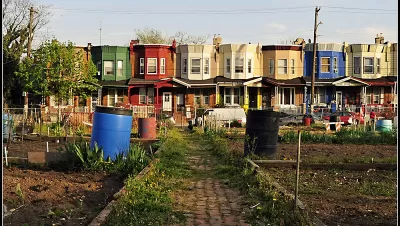An aging population of farmers may give way to a generation of young entrepreneurs who see the value and values of growing food.

Writing in Fortune, Kimball Musk notes that the rapidly shifting agricultural industry is opening up opportunities for younger people to begin taking over smaller farms, albeit with some training beforehand. Musk, a cofounder of the start-up Square Root, is trying to teach people how to grow and market their food through urban, indoor hydroponic farms. The program then works with the US Department of Agriculture to obtain loans in order to move on to their own farm.
In recent years, many of the same technologies that have revolutionized the consumer world have fundamentally altered and improved the way we farm. Drones, satellites, autonomous tractors and robotics are now all at home on farms. As a result, tomorrow’s farms won’t just be part of the agricultural sector, they’ll also be part of the tech sector – and tomorrow’s farmers will look a whole lot like the coders who populate Silicon Valley…except with better tans.
The need for new farmers is becoming especially acute, as the number of farmers fell by 100,000 and new farmers declined by 20 percent between 2007 and 2012.
FULL STORY: How Millennials Will Forever Change America’s Farmlands

Alabama: Trump Terminates Settlements for Black Communities Harmed By Raw Sewage
Trump deemed the landmark civil rights agreement “illegal DEI and environmental justice policy.”

Study: Maui’s Plan to Convert Vacation Rentals to Long-Term Housing Could Cause Nearly $1 Billion Economic Loss
The plan would reduce visitor accommodation by 25% resulting in 1,900 jobs lost.

Why Should We Subsidize Public Transportation?
Many public transit agencies face financial stress due to rising costs, declining fare revenue, and declining subsidies. Transit advocates must provide a strong business case for increasing public transit funding.

Paris Bike Boom Leads to Steep Drop in Air Pollution
The French city’s air quality has improved dramatically in the past 20 years, coinciding with a growth in cycling.

Why Housing Costs More to Build in California Than in Texas
Hard costs like labor and materials combined with ‘soft’ costs such as permitting make building in the San Francisco Bay Area almost three times as costly as in Texas cities.

San Diego County Sees a Rise in Urban Coyotes
San Diego County experiences a rise in urban coyotes, as sightings become prevalent throughout its urban neighbourhoods and surrounding areas.
Urban Design for Planners 1: Software Tools
This six-course series explores essential urban design concepts using open source software and equips planners with the tools they need to participate fully in the urban design process.
Planning for Universal Design
Learn the tools for implementing Universal Design in planning regulations.
Smith Gee Studio
Alamo Area Metropolitan Planning Organization
City of Santa Clarita
Institute for Housing and Urban Development Studies (IHS)
City of Grandview
Harvard GSD Executive Education
Toledo-Lucas County Plan Commissions
Salt Lake City
NYU Wagner Graduate School of Public Service




























